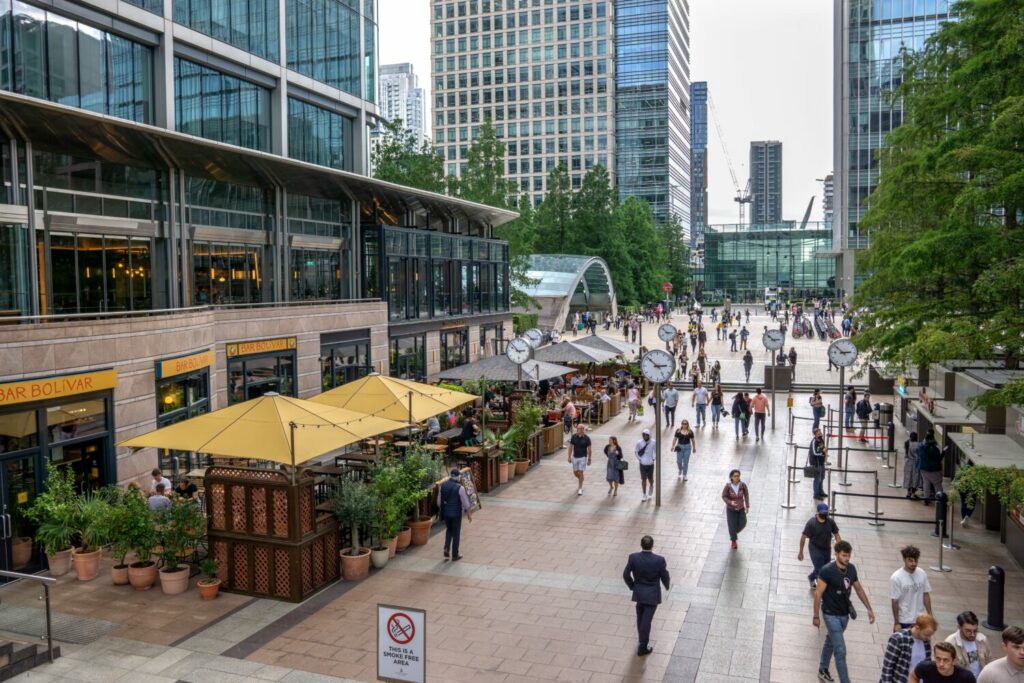Research identifies ‘Six Pillars of Success’ for retail spaces
New research has put forward ‘Six Pillars of Success’ for ensuring that the UK’s towns, cities, and retail destinations remain relevant for their local communities.
Consumer and location intelligence specialist CACI, in collaboration with real estate agency P-THREE, have said that there is a “disconnect” between what spaces offer to the public and the wants and needs of customers.
The research found that consumer spend is increasingly coming from a 15-minute catchment, with over 75% of revenue coming from the local population in eight out of 13 asset types.
However, 52% of locations are “over spaced” for retail, and with online spending set to surpass offline by 2030, CACI and P-THREE said that there is a “clear need for retail-led destinations to evolve”.
The report has characterised six ‘pillars’ for ensuring retail spaces survive:
1. Right sizing retail
The report found that 37% of the population actively seek out independent businesses over chains, and suggests that curating a mixture of independents and national chains to reflect local identities is key. As a result, CACI and P-THREE have argued that this can be achieved through rightsizing and a reassessment of tenant line-ups.
2. Unique offline experiences
The report argues that offering experiences that cannot be replicated at home is one way to boost retail spaces. It adds that strong F&B and leisure provisions provide customers with additional benefits. The research found that leisure users spend 52% more on retail and catering over a year at a shopping location than non-leisure users and travel an additional 8% further to visit. It was also found that F&B users spend 38% more than non-catering users.
3. Community spaces to love
CACI and P-THREE have said that optimising the relationship between supply and demand across a number of amenities will help landlords to plug gaps in the community. Although some may not deliver the same rental income as retail or F&B, the additional footfall and social benefits will recover some of the potential value lost, the report said.
4. Supporting social cohesion through better residential design
The report found that half of people moving home do so to somewhere within two miles of their previous location, and suggests that residential units should be varied enough to fill supply gaps. It argues that getting the right homes in the right places is a key way that the environment can support the community.
5. Working near home
CACI and P-THREE’s report said that despite the increasing amount of people working from home, this notion may be better represented as “working near home”, with 46% of office workers saying they would consider a flexible desk within their local area. They argue that understanding local demand levels could unlock the potential for co-working provision.
6. Creating great places
The final pillar is focused on providing attractive surrounding environments for customers. The research found that shoppers who rated a physical retail environment a 5/5, they spent 26% more than those who rated it a 3/5. On top of this, the report said that sustainably built places enhance the local environment through biodiversity, carbon capture, and the increase in green spaces.

Tolga Necar, principal consultant at CACI, said: “Property only has value and purpose when it relates to people, and these six pillars identify everything a place needs to serve its community effectively. Breaking the ‘clone town’ mould requires a bespoke approach and balance is key. Plenty of places, new and old, are doing this effectively”.
Justin Taylor, Co-Founder of P-THREE, added: “Many of the projects we work on arise from the need to unravel the oversupply of underperforming retail space in towns, cities and centres that have lost their identity, purpose, and connection with their communities. Resilience is within our grasp, but we must be thinking beyond the traditional commercial drivers to create balanced communities that will thrive for the long-term.”